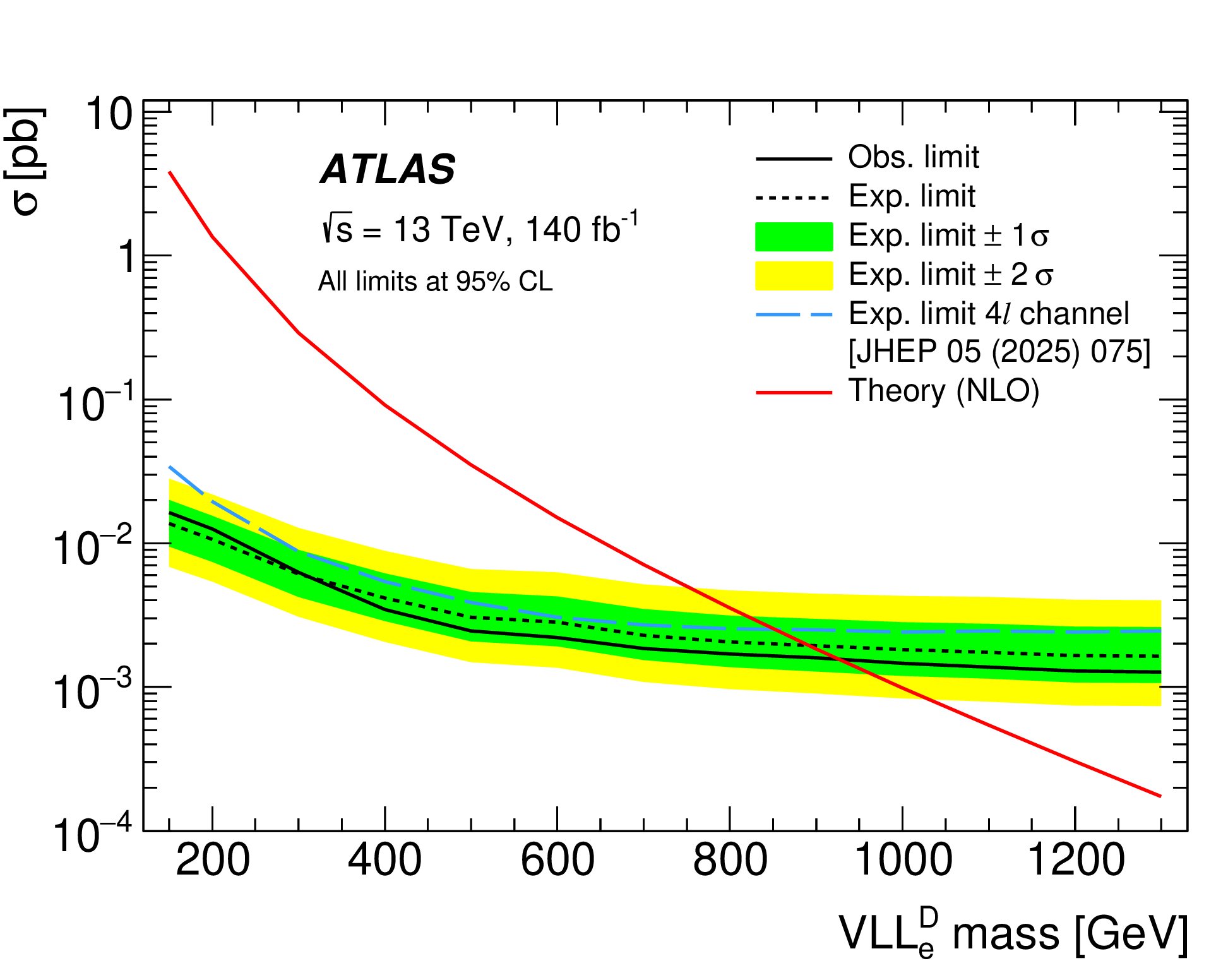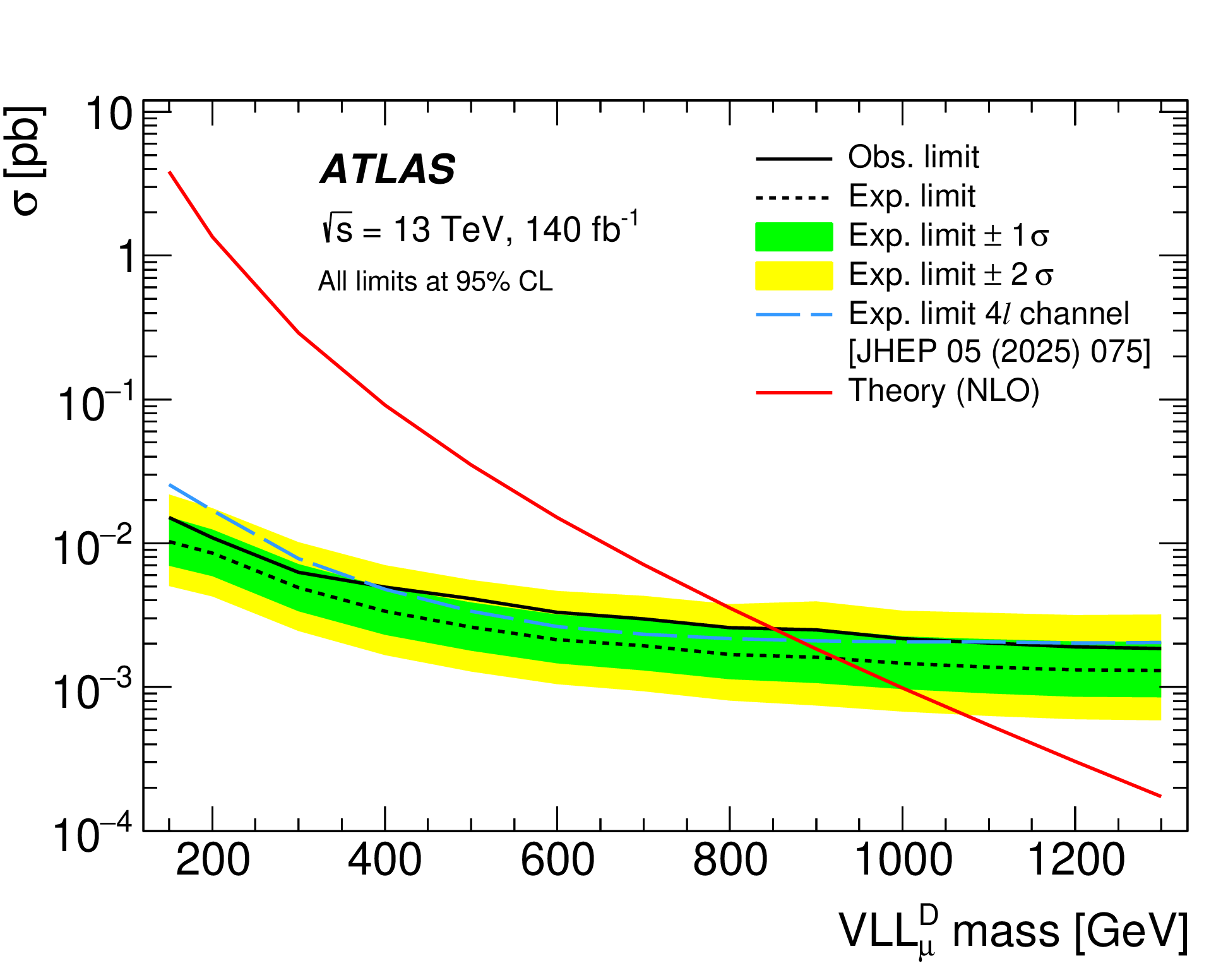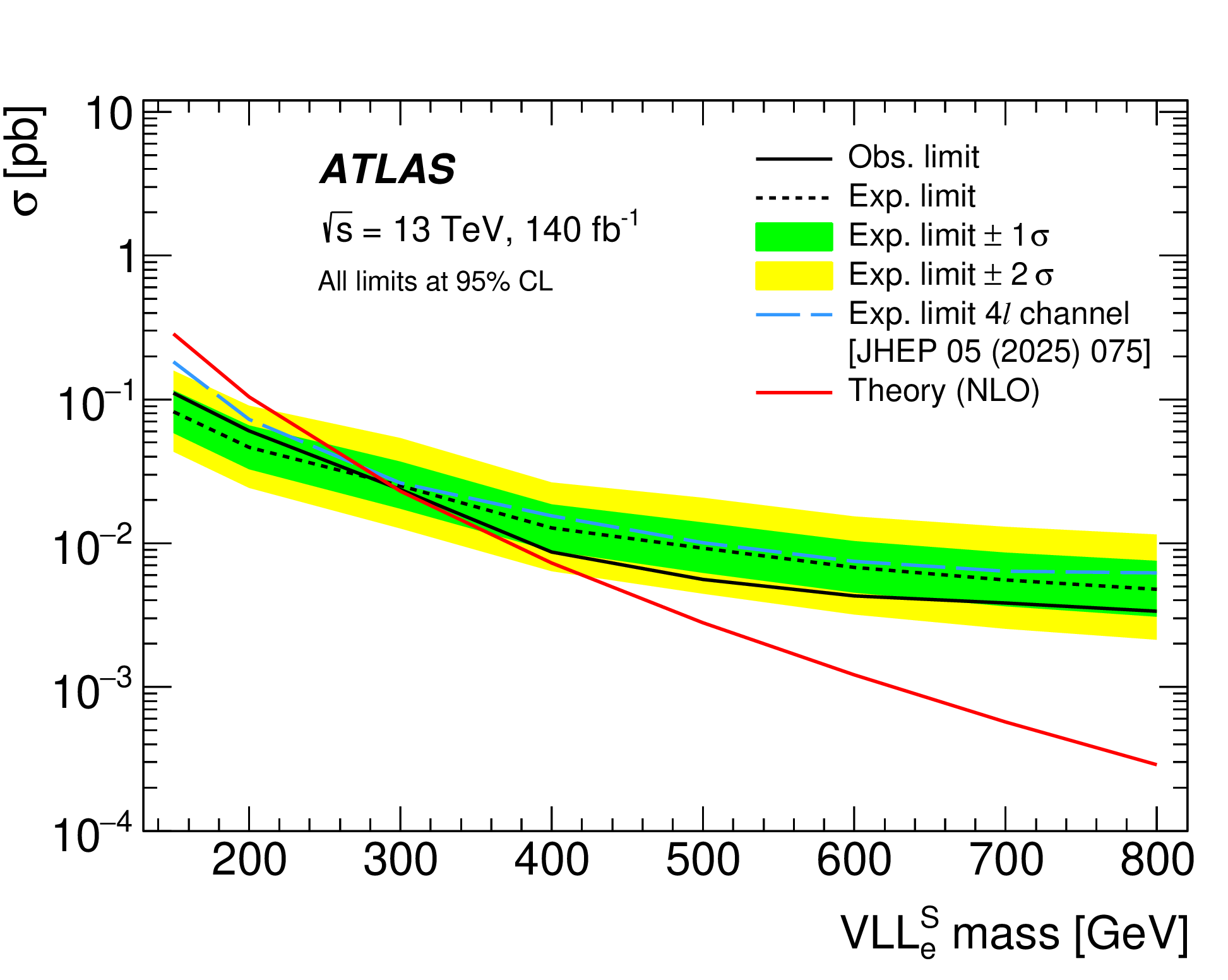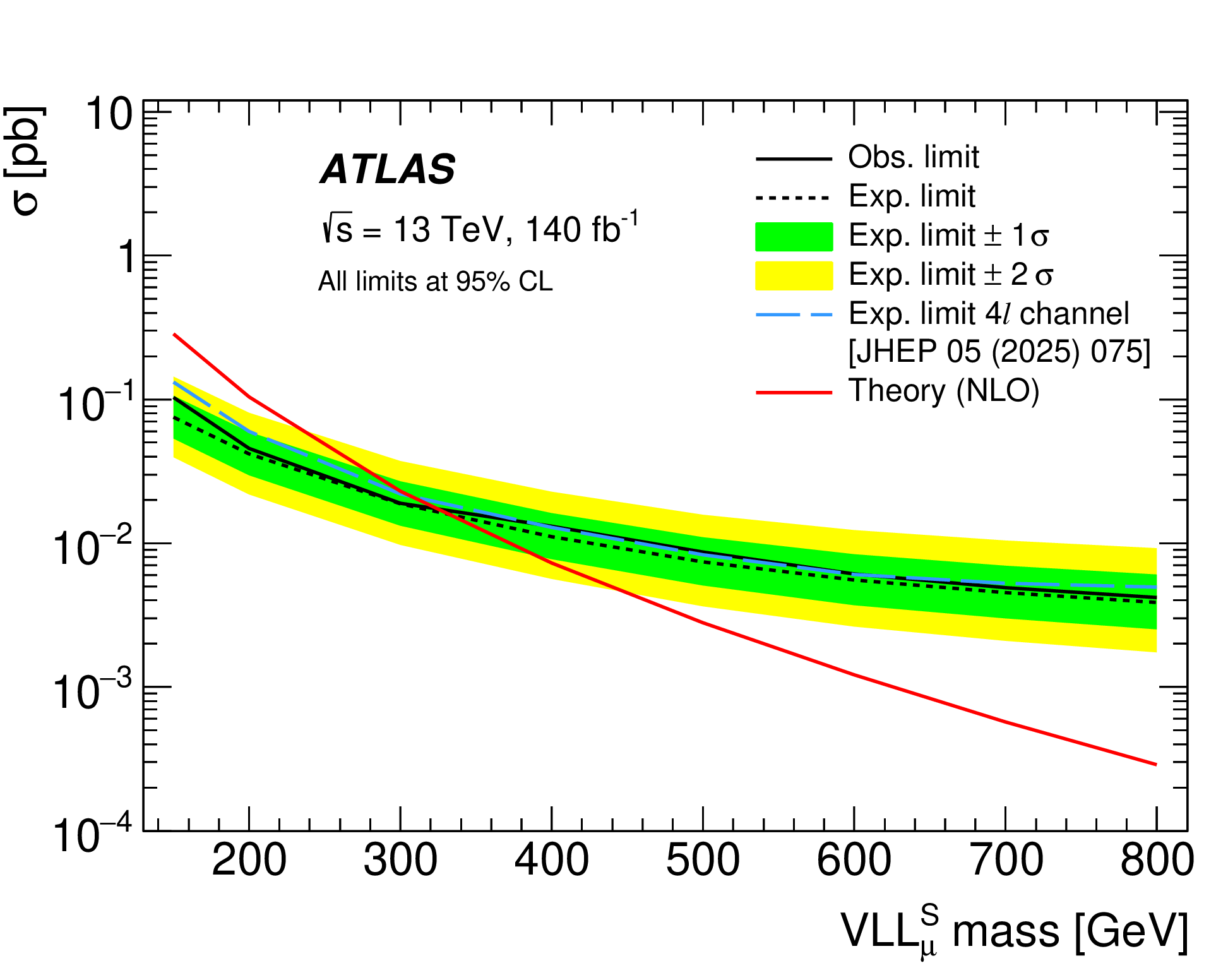Page 3
CMS-HIG-24-009
top loop
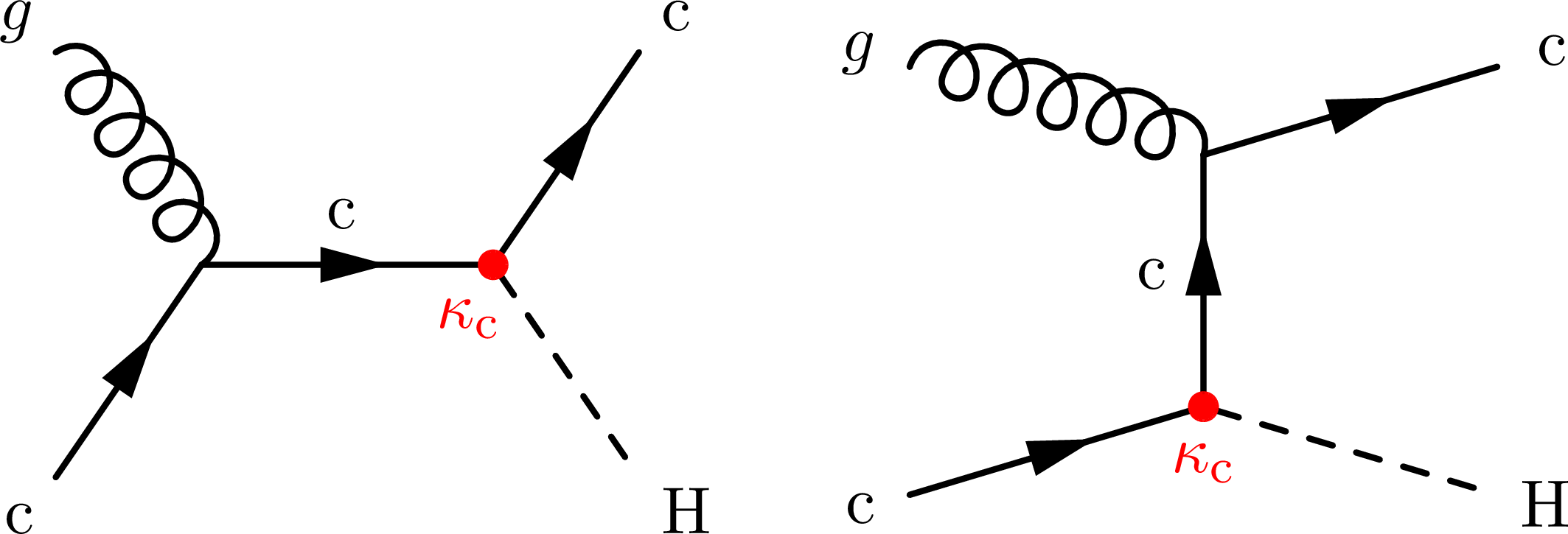
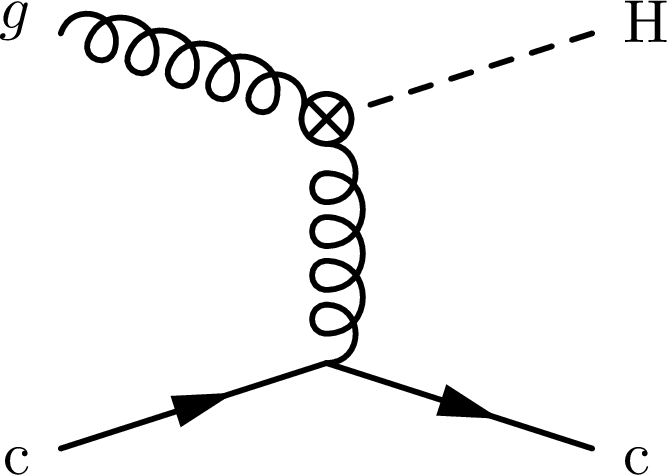

Page 1
Aug 14th, 2025
Page 2
CMS-HIG-24-009
Search for a Higgs boson produced in association with a charm quark and decaying to a W boson pair in proton-proton collisions at √s = 13 TeV
This paper presents a search for a Higgs boson produced in association with a charm quark (cH) which allows to probe the Higgs-charm Yukawa coupling strength modifier κc. Higgs boson decays to a pair of W bosons are considered, where one W boson decays to an electron and a neutrino, and the other W boson decays to a muon and a neutrino. The data, corresponding to an integrated luminosity of 138 fb−1, were collected between 2016 and 2018 with the CMS detector at the LHC at a center-of-mass energy of √s= 13 TeV. Upper limits at the 95% confidence level (CL) are set on the ratio of the measured yield to the standard model expectation for cH production. The observed (expected) upper limit is 1065 (506 ). When combined with the previous search for cH in the diphoton decay channel of the Higgs boson, the limits are interpreted as observed (expected) constraints at 95% CL on the value of κc, |κc|< 47 (51 ).
Page 3
CMS-HIG-24-009
top loop



Page 4
CMS-HIG-24-009
BDT Training Variables
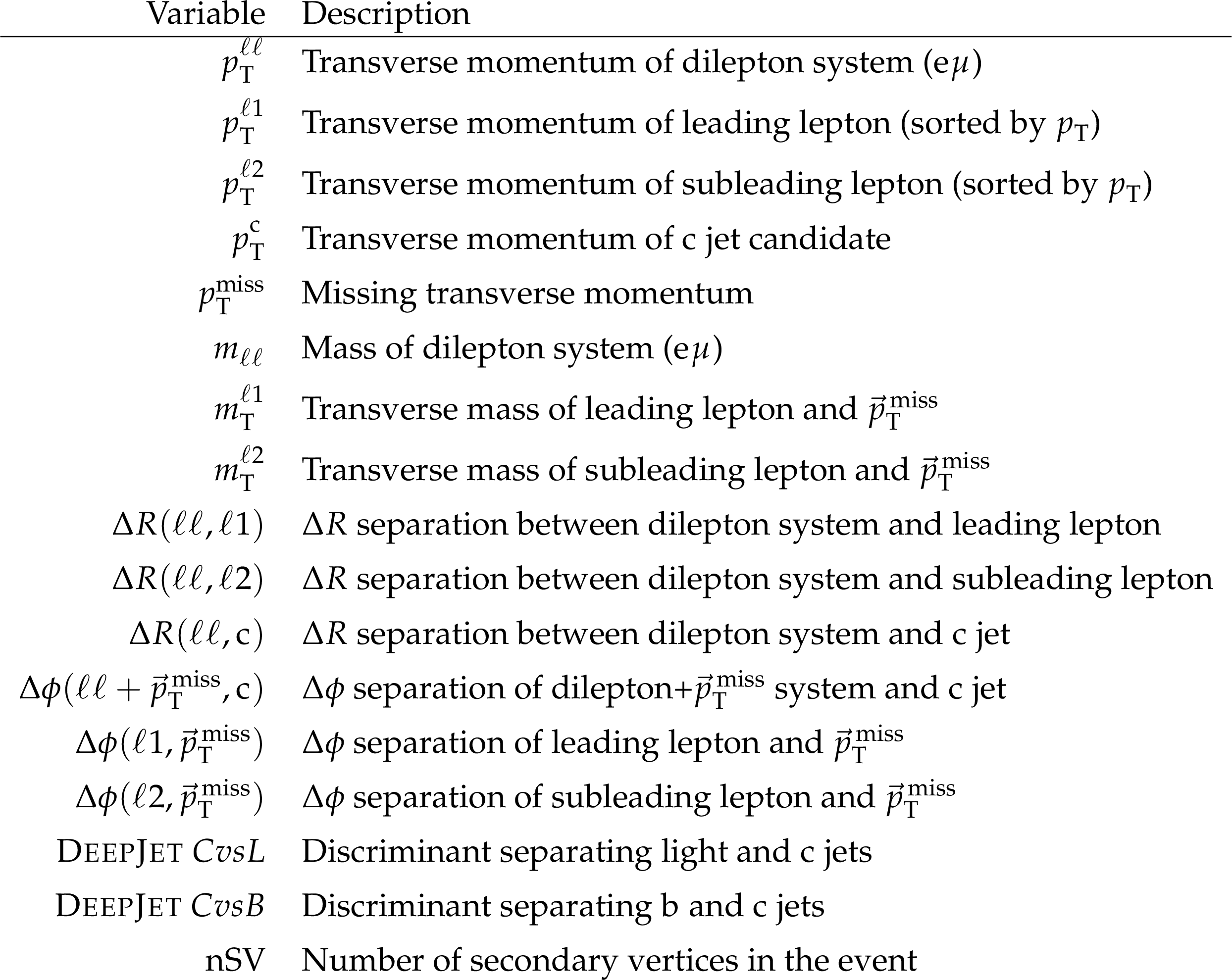
Page 5
CMS-HIG-24-009
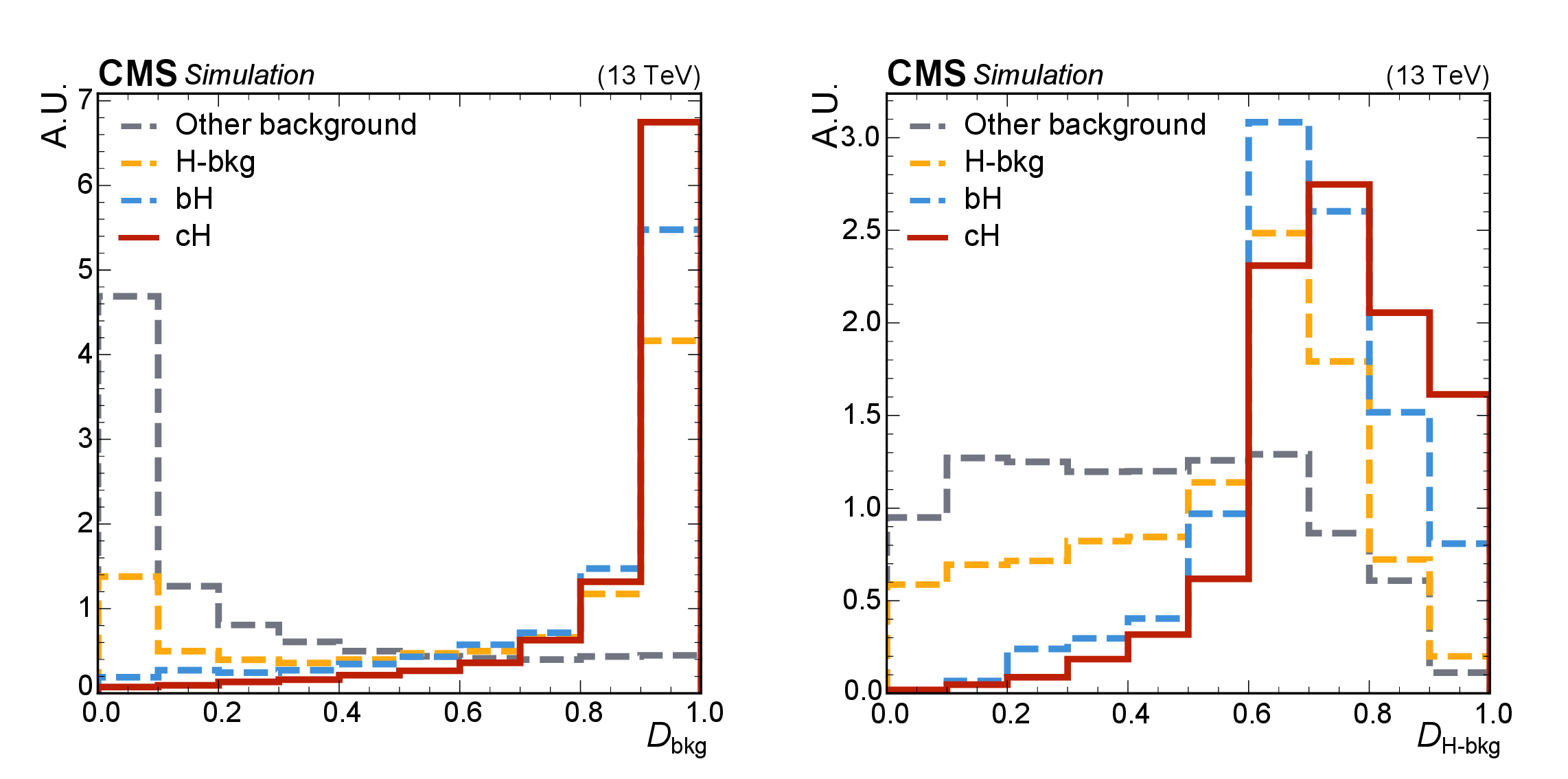
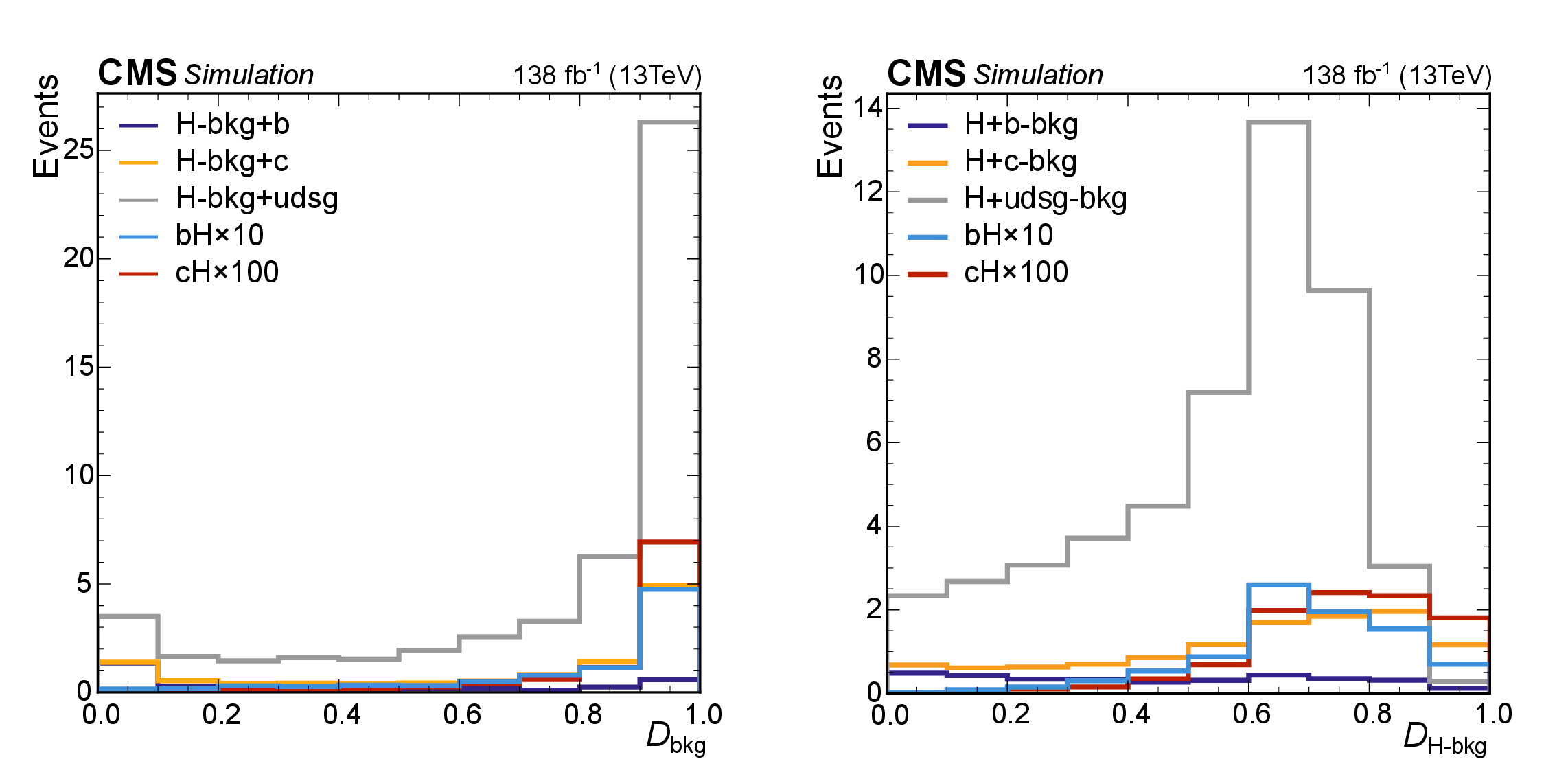
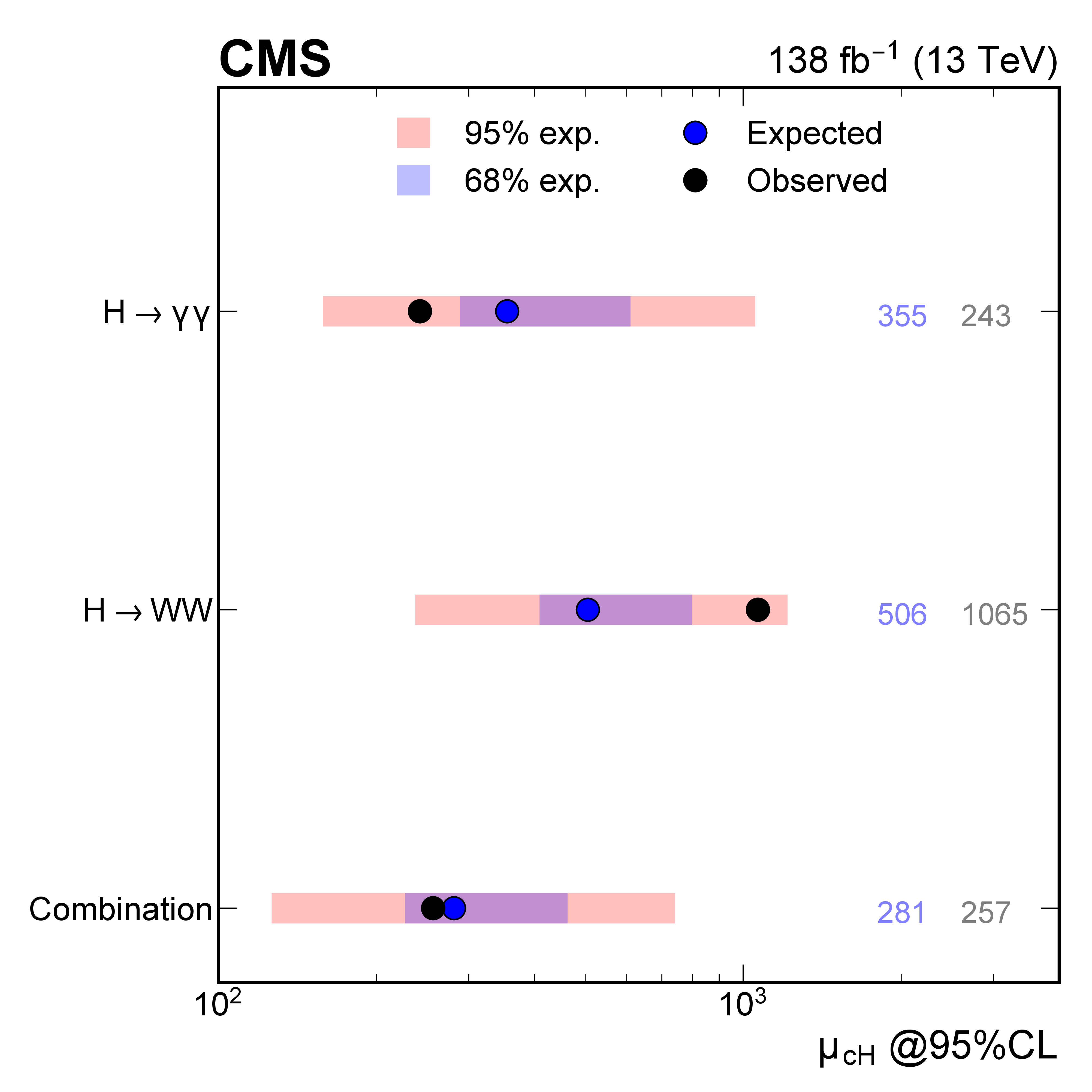
Page 6
ATLAS Collab.
Search for the production of a Higgs boson in association with a single top quark in collisions at √s=13 TeV with the ATLAS detector
A search for the production of a Higgs boson in association with a single top quark,tH , is presented. The analysis uses proton--proton collision data corresponding to an integrated luminosity of 140 fb-1 at a centre-of-mass energy of 13 TeV, collected by the ATLAS detector at the LHC. The search targets Higgs-boson decays into bb, WW, ZZ, and ττ, accompanied by an isolated lepton (electron or muon) from the top-quark decay. Multivariate techniques are employed to enhance the separation between signal and background processes. The observed signal strength, μtH, defined as the ratio between the measured cross-section and the predicted Standard Model value, is μtH=8.1 ±2.6(stat)±2.0(syst). The significance of the observed (expected) signal above the background-only expectation is 2.8(0.4) standard deviations. The corresponding observed (expected) upper limit at the 95% confidence level on the tH cross-section is found to be 13.9 (6.1) times the value predicted by the Standard Model. An interpretation with an inverted sign of the top-quark Yukawa coupling is performed, and the signal strength and corresponding limit are reported.
Page 7
ATLAS Collab.
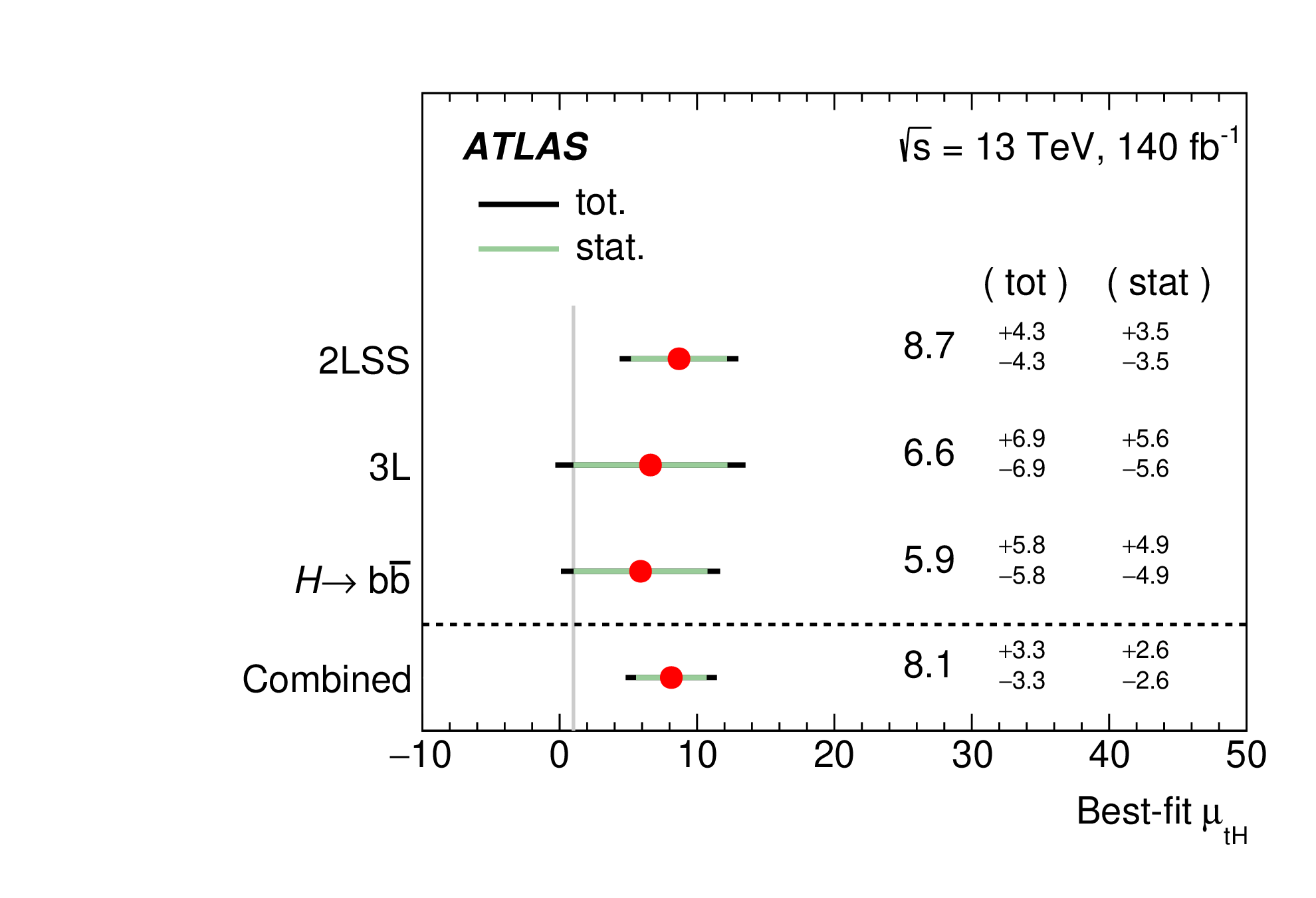
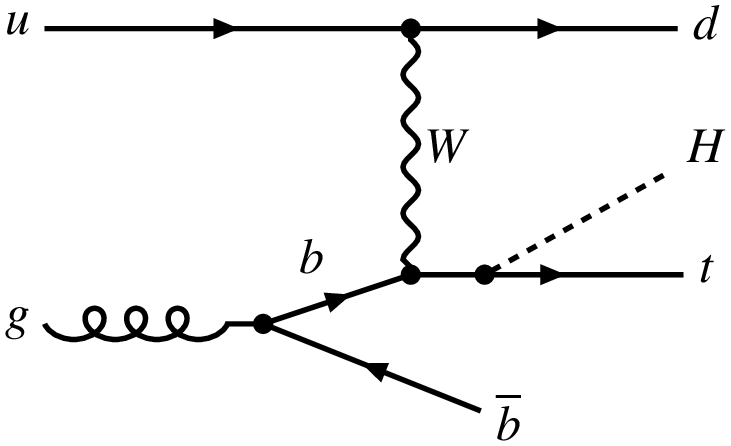
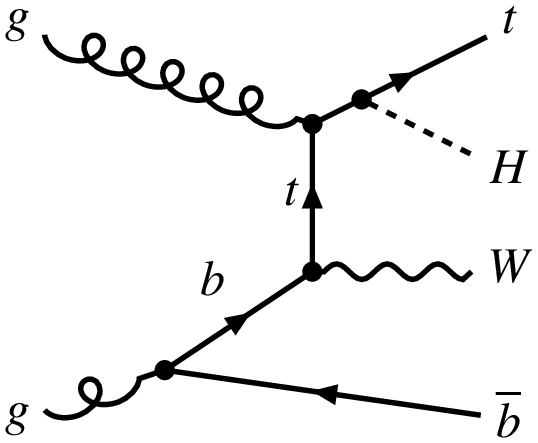
Page 8
LHCb Collab.
First observation of the charmless baryonic decay B+→Λppp
A search for the charmless baryonic decay B+→Λppp is performed using proton-proton collision data recorded by the LHCb experiment, corresponding to an integrated luminosity of 5.4 fb-1. The branching fraction for this decay is measured for the first time relative to that of the topologically similar decay B+ →J/ψK+, with J/ψ→ΛpK-. The branching fraction is measured to be B(B+→Λppp) = (2.08 ±0.34 ±0.12 ±0.26) x 10-7, where the first uncertainty is statistical, the second is systematic, and the third arises from the uncertainty in the normalization channel branching fraction. The CP asymmetry is measured to be ACP = (5.4 ±15.6 ±2.4)% , where the uncertainties are statistical and systematic. The background-subtracted invariant-mass distributions of Λp and p pairs exhibit pronounced enhancements at both kinematic thresholds, in contrast to a uniform phase-space distribution.
Page 9
LHCb Collab.
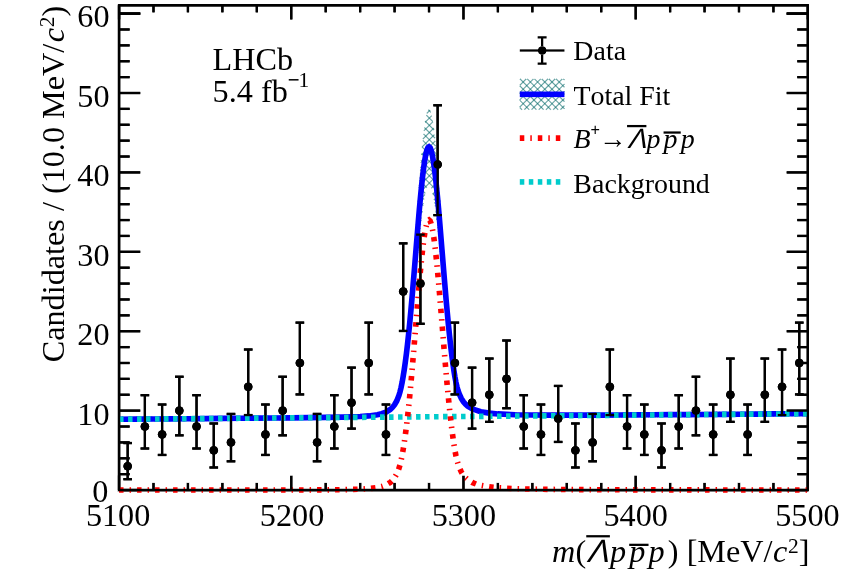
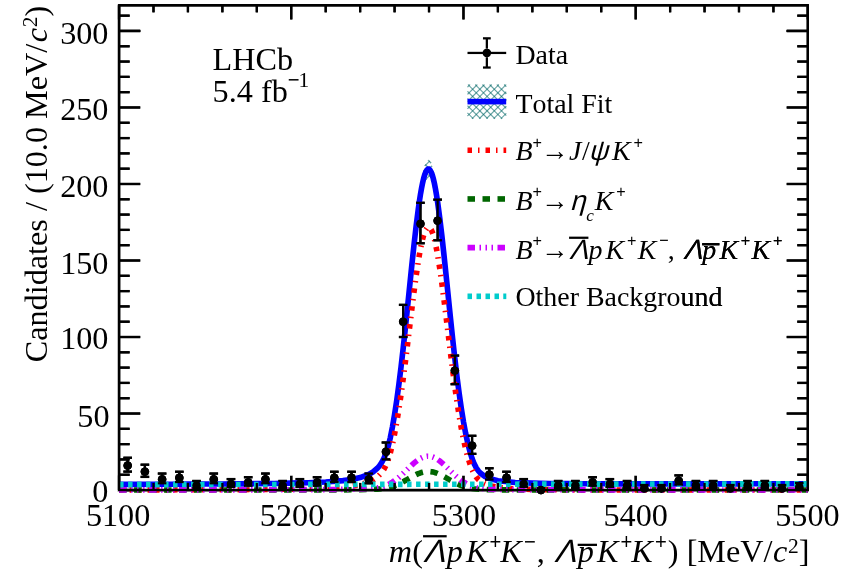
Page 10
LHCb Collab.
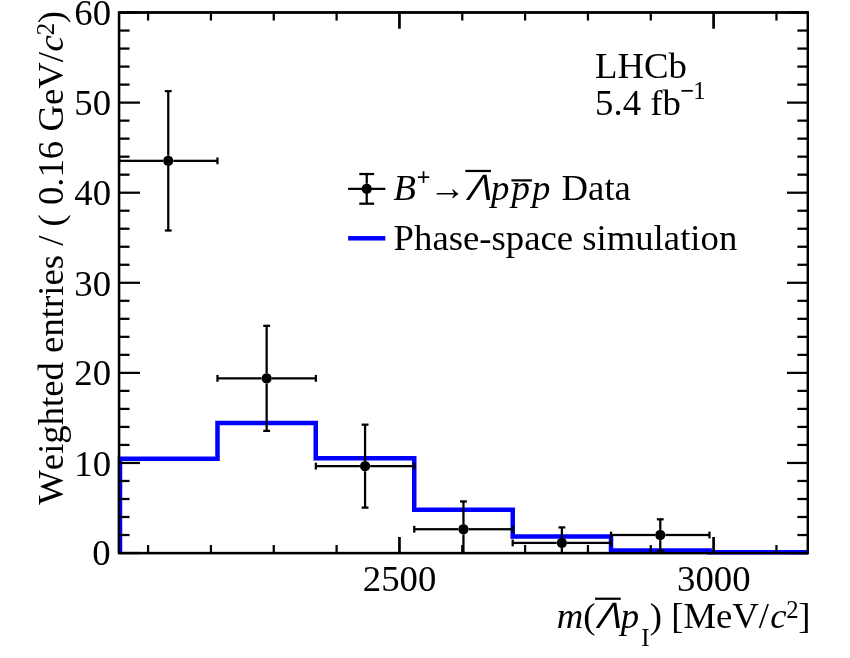
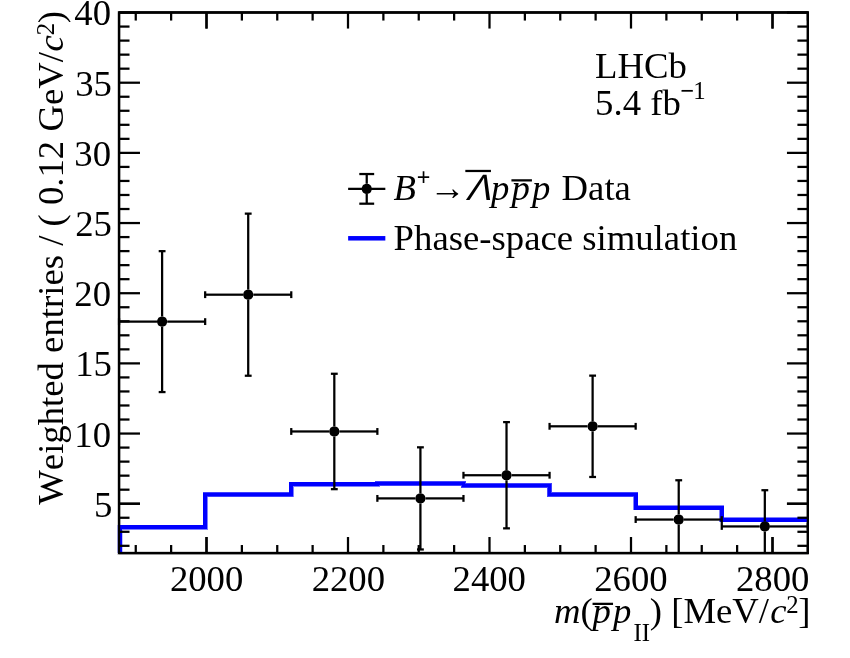
Page 11
CMS-SUS-23-003
A general search for supersymmetric particles in scenarios with compressed mass spectra using proton-proton collisions at √s = 13 TeV
A general search is presented for supersymmetric particles (sparticles) in scenarios featuring compressed mass spectra using proton-proton collisions at a center-of-mass energy of 13 TeV, recorded with the CMS detector at the LHC. The analyzed data sample corresponds to an integrated luminosity of 138 fb-1. A wide range of potential sparticle signatures are targeted, including pair production of electroweakinos, sleptons, and top squarks. The search focuses on events with a high transverse momentum system from initial-state-radiation jets recoiling against a potential sparticle system with significant missing transverse momentum. Events are categorized based on their lepton multiplicity, jet multiplicity, number of b-tagged jets, and kinematic variables sensitive to the sparticle masses and mass splittings. The sensitivity extends to higher parent sparticle masses than previously probed at the LHC for production of pairs of electroweakinos, sleptons, and top squarks with mass spectra featuring small mass splittings (compressed mass spectra). The observed results demonstrate agreement with the predictions of the background-only model. Lower mass limits are set at 95% confidence level on production of pairs of electroweakinos, sleptons, and top squarks that extend to 325, 275, and 780 GeV, respectively, for the most favorable compressed mass regime cases.
Page 12
CMS-SUS-23-003
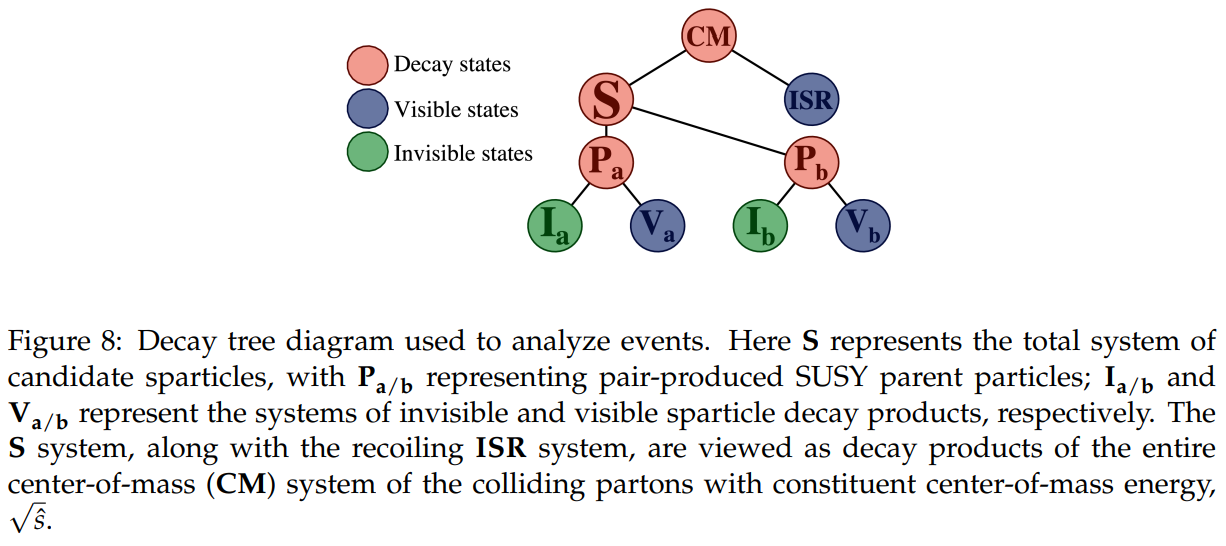
Page 13
ATLAS Collab.
Search for Beyond the Standard Model physics with anomaly detection in multilepton final states in pp collisions at √s=13 TeV with the ATLAS detector
A model-agnostic search for Beyond the Standard Model physics is presented, targeting final states with at least four light leptons (electrons or muons). The search regions are separated by event topology and unsupervised machine learning is used to identify anomalous events in the full 140 fb-1of proton-proton collision data collected with the ATLAS detector during Run 2. No significant excess above the Standard Model background expectation is observed. Model-agnostic limits are presented in each topology, along with limits on several benchmark models including vector-like leptons, wino-like charginos and neutralinos, or smuons. Limits are set on the flavourful vector-like lepton model for the first time.
Page 14
ATLAS Collab.
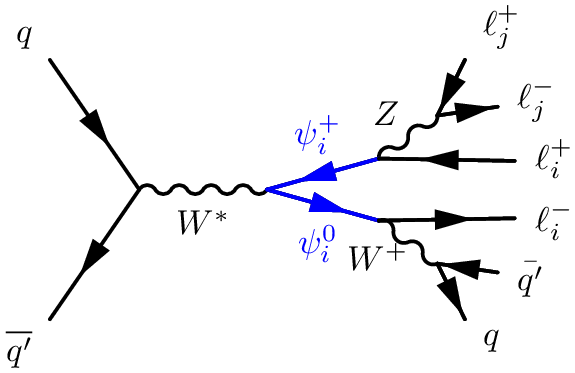
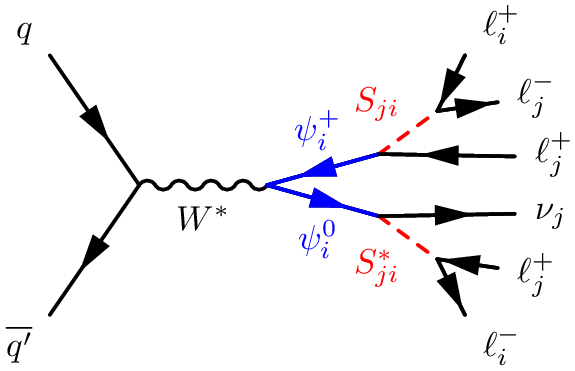
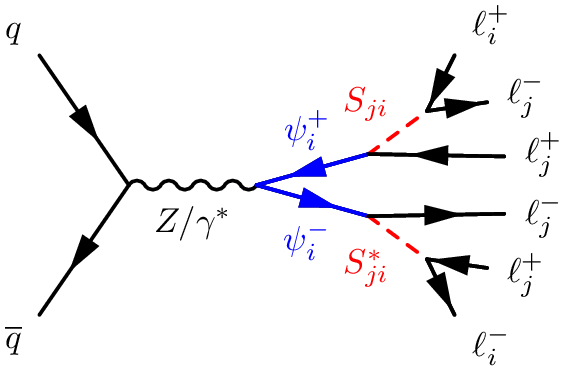
Page 15
ATLAS Collab.
